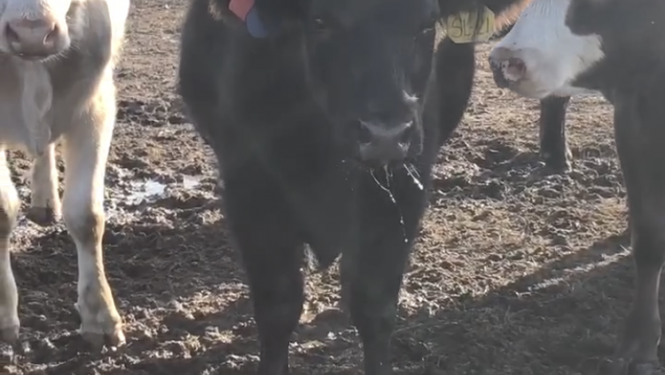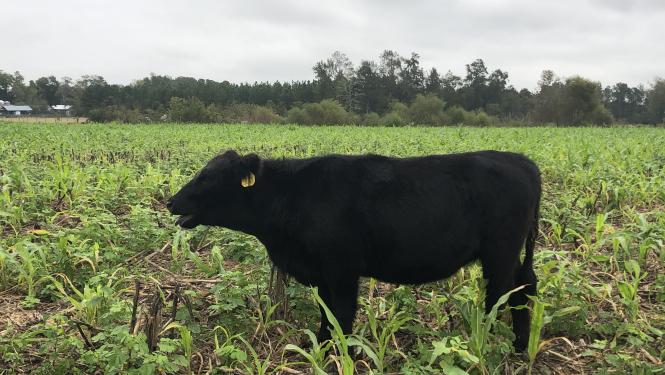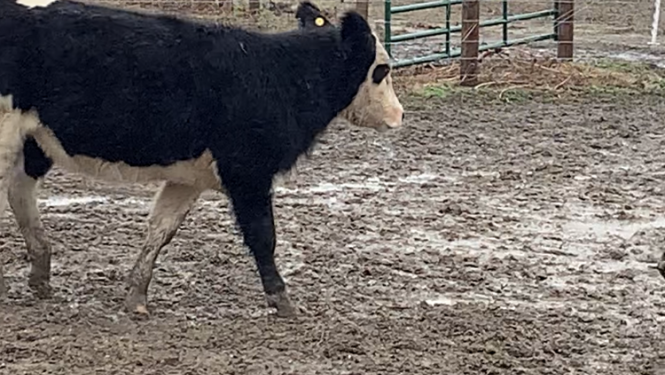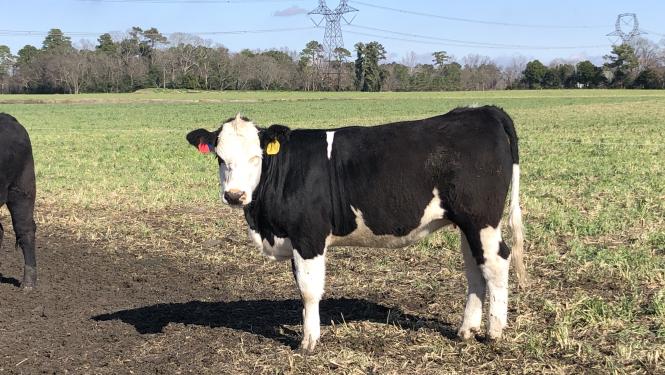I won't give Kentucky 31 fescue grace anymore.
I did not have livestock growing up and was raised well outside of fescue country, so when I started hearing about KY-31 toxicosis when I got to college, I really listened to every word. Like a good college student does, I absorbed the information as the truth. I attended workshops led by Dr. Matt Poore and Johnny Rogers and took their stories of slipped calves, reduced performance, and heat stress to heart. Since, I have led workshops and talked about the toxicosis myself and run down the list of all the problems associated with KY-31. I had no idea that what I had taken to heart as the truth was so controversial in the field. I have visited hundreds of farms with KY-31 and had suspicions that what I was seeing was sub-clinical toxicosis, and when I would bring it up there was always another answer.
“They’re just wormy.”
“Those genetics just carry hair.”
“They’re black cows so they get hot.”
“I’ve never had an issue before.”
“I’ve got some clover in there, I’m not worried about it.”
After a while of hearing these statements and trying to be a reasonable consultant, I’ll admit I started to give KY-31 some grace. I would think ‘It’s not so bad- most of these people have cattle that are adapted to it. They’ve selected for genetics that work on fescue! If it’s diluted with some other grasses, it’s probably not a problem.’ I started to create a lot of leniency for folks who didn’t want to believe in the toxicosis. That mentality was challenged in the fall of 2019. I’ve had the joy of bringing livestock back to the family farm to graze cover crops once the row crops have been harvested in the fall until we are ready to plant again come spring. This is on a contract basis, and most have been finishers brought in from the western part of North Carolina to our place in the east. From a forage perspective, this works very well because we have a greater potential to grow winter annuals and have high-quality forage through the winter.
One big hiccup with this system is that, as my vet likes to remind me, cattle can travel easily from the east to the west but the other way around is tricky. In mid-October, we got our first load of finishers in. I’m sure most of you remember what the fall was like- unseasonably hot and dry. The first few days we were lucky and it stayed overcast with low humidity. We kept the heifers in our arrival lot with stockpiled Gaucho bermuda for about 5 days, when we did our weigh-ins and checked temperatures for an early check of shipping fever. Although they had no other symptoms present, we had 5 heifers with fevers in the 103.5-104.5 range. At the time, I thought we were doing our jobs well and catching shipping fever early. We moved the herd to their next location- late-planted Prime 360 millet. The weather turned hot and humid on us and the heifers started to really fall apart. There was one day when the humidity was 90%, the sun was out, and it was about 65 degrees. While it was warm out, there is no reason that those conditions should cause severe heat stress. I’ll never forget this day because I have never done so much second-guessing and calling friends for advice in my life. About a third of the herd was fine and would emerge out of the shade in the morning and evenings. The middle third showed increased respiratory rates, occasional open mouth breathing, but would not emerge from the shade. The top third were slobbering, bouncing in place from breathing so heavy, and wallowing in mud holes they had made from their own urine. As a producer who was responsible for the safe care of someone else’s livestock, I was a nervous wreck. To no surprise, the 5 heifers who had high fevers chute side a few days earlier were part of the top third with severe heat stress. After confirmation from a friend that what I was looking at was severe heat stress and not shipping fever, I thought back to presentations from Dr. Poore and Johnny Rogers. To the trained eye, you could see from the moment they got off the truck that they had experienced fescue toxicosis- lost tail switches, frostbite on ears, a few heavy hair coats. It was pretty hard to watch it as the caretaker for these animals. More sound veterinary advice: “Paige, you know there is nothing in a bottle for fescue toxicosis.”

We slumped through the next week of warm weather and all of the heifers pulled through. Nearly a month later, I was spending the day at the Eastern NC Cattle Conference and it was warm- 75 degrees, high humidity, and overcast. I called my brother and asked him to take a picture of number 21. After 6 weeks off of fescue, this heifer was thriving in hotter conditions that when she first arrived. This is KY-31 toxicosis.


Number 21 wasn’t our only example of a complete KY-31 turnaround. While most of the heifers arrived in great body condition and averaged about 700lbs, there was one heifer who was 498lbs. She had a super thick hair coat, very little muscle development for her age, and had a 104.5 degree body temp. On our farm, if you get a name it’s not for a good reason. She was lovingly named Meatball after plowing through polywire one too many times. Honestly, I didn’t have high expectations of her. She wasn’t aggressive at the feed bunk, she was skittish of us, and with her track record of not respecting polywire I didn’t think we would ever have control of her. Three months down the road and she was a completely different animal. She had slicked off, was respectful of polywire, and gained 4lbs per day over the 160 day period we had her. I should not be able to slick cattle off in January and, while I’m proud of what he did this year, I’m not that good. Those 4lbs ADG were compensatory gain because she was so affected by the fescue toxicosis earlier in her development. While this turnaround was great for my paycheck, I often think about how much was left on the table before I had her. We all get paid for pounds on the trailer, so it’s up to you to decide if you want that money in your pocket or if you want someone like me to get it.


Looking back, I really wonder about those 5 heifers with high temperatures. Was it early onset of shipping fever, or did they have elevated temperatures as a result of KY-31 fescue toxicosis? There is significant research being reported (RESEARCH summarized here) to suggest that cattle consuming toxic fescue have elevated body temperatures. I want you to picture a feedlot- where they bring in hundreds of cattle a day and have an extremely impressive eye for disease. Most of these feedlots exist outside of the Southeast where fescue toxicosis isn’t ever thought of. Do you think they would look at number 21 or Meatball and believe that they had all their vaccines? Do you think they would assume that they come from great genetic backgrounds? Do you think that those cattle already immunocompromised from KY-31 are more likely to succumb to other diseases? The bottom line is that when we send cattle outside of our region, those producers aren’t going to give grace for KY-31 either.
[Paige Smart]
‘I’ll just clean it up and then burn down to plant summer annual’.
This is the last thought I had before opening the gate to an old K-31/weed stand. I had purchased the 15 acres next to my farm back in the fall of 2019. After cleaning up fence rows and adding a few gates, the property was ready to graze. How bad could the K-31 actually be?? I have talked for years about the benefit of Novel Endophytes vs. toxic fescue, but it couldn’t hurt to just do a quick grazing, right? WRONG! One week in I noticed heat stress. Two weeks in and everything had fallen apart. Cows were ‘hollowed’ out and stressed. Calves were lethargic. There is a small pond in the field (mudhole really) and they laid in it like pigs. Temperatures were in the 70s with many overcast days, but that didn’t change much. After three weeks in I decided enough was enough and moved them out. One week after moving back onto a mixed-grass stand (no fescue), everything was different. Calves were brighter and more energetic. Bags were fuller and sides weren’t hollow anymore.
We talk so much about these things in theory, but there is nothing like real-world proof! After pulling the cows off, I had my neighbor spray the field down in preparation for planting a summer annual, which was the original intent. I’ll follow this with a winter annual, then another summer annual and I will re-evaluate the ground at the end of the summer season in 2021. In addition to alleviating compaction and conditioning the ground, I’ll eliminate the KY-31.
[Josh Baker]
I don’t want you to read this article and feel guilty. I don’t want you to feel bad for the cards we have been dealt in the Southeast. What I want is for people to take their fescue goggles off. Start paying attention to the subtle signs your livestock are showing you. Over time, I feel confident you’ll realize how much this forage is taking from you! My advantage to taking my fescue goggles off is that each year, I get to see the transformation of cattle coming off of fescue. What’s Josh’s advantage? He gets to see the transition of his cows between his KY-31 pasture and his non-KY-31 acreage time and time again. Your disadvantage if you only have Kentucky 31 is that you never get to see how well they could really do. Realizing you have a fescue problem is half the battle. You should feel empowered to take control of this grass and address the money left on the table.